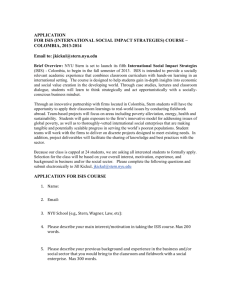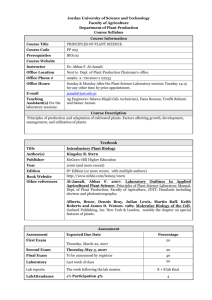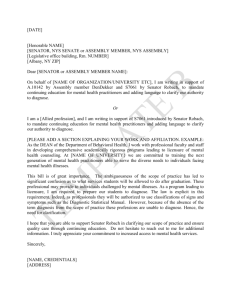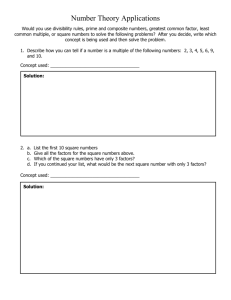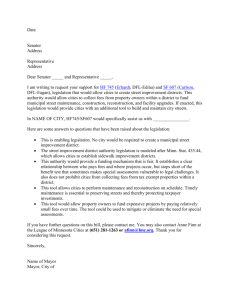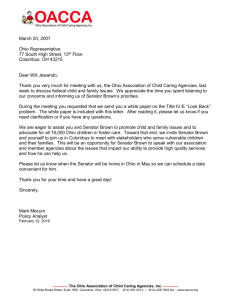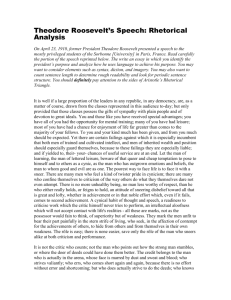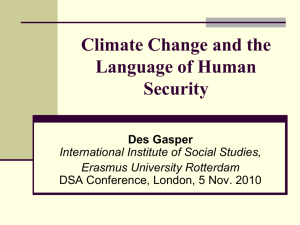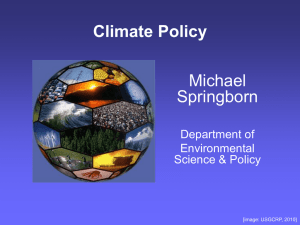Homework #3: Short paper - Environmental Science & Policy
advertisement
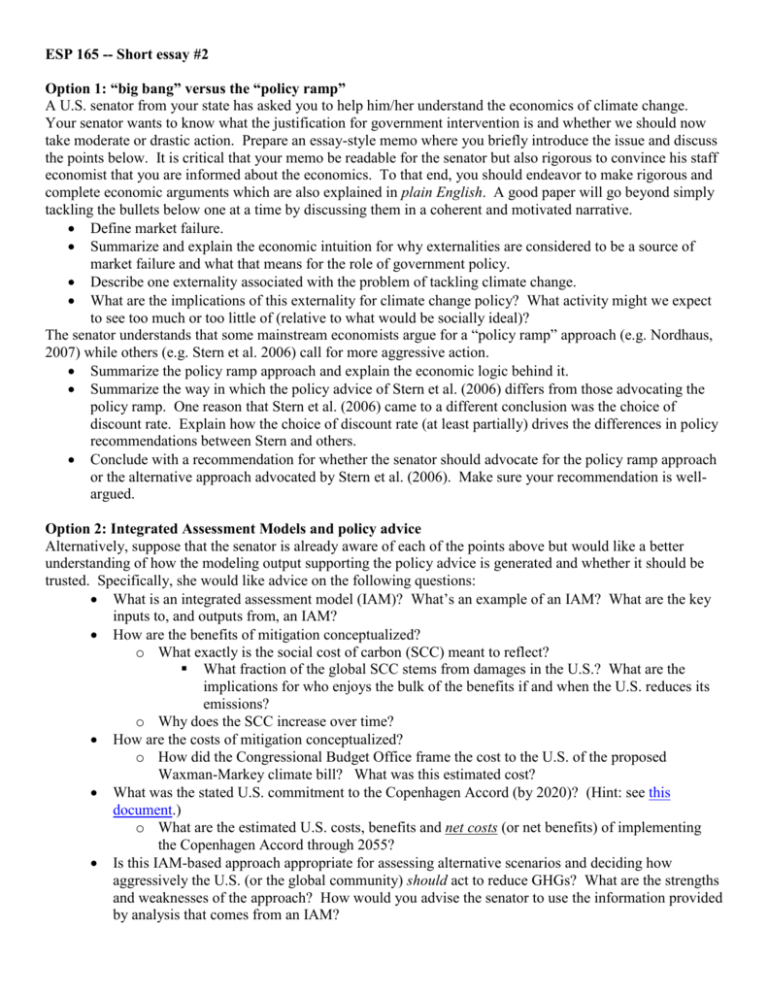
ESP 165 -- Short essay #2 Option 1: “big bang” versus the “policy ramp” A U.S. senator from your state has asked you to help him/her understand the economics of climate change. Your senator wants to know what the justification for government intervention is and whether we should now take moderate or drastic action. Prepare an essay-style memo where you briefly introduce the issue and discuss the points below. It is critical that your memo be readable for the senator but also rigorous to convince his staff economist that you are informed about the economics. To that end, you should endeavor to make rigorous and complete economic arguments which are also explained in plain English. A good paper will go beyond simply tackling the bullets below one at a time by discussing them in a coherent and motivated narrative. Define market failure. Summarize and explain the economic intuition for why externalities are considered to be a source of market failure and what that means for the role of government policy. Describe one externality associated with the problem of tackling climate change. What are the implications of this externality for climate change policy? What activity might we expect to see too much or too little of (relative to what would be socially ideal)? The senator understands that some mainstream economists argue for a “policy ramp” approach (e.g. Nordhaus, 2007) while others (e.g. Stern et al. 2006) call for more aggressive action. Summarize the policy ramp approach and explain the economic logic behind it. Summarize the way in which the policy advice of Stern et al. (2006) differs from those advocating the policy ramp. One reason that Stern et al. (2006) came to a different conclusion was the choice of discount rate. Explain how the choice of discount rate (at least partially) drives the differences in policy recommendations between Stern and others. Conclude with a recommendation for whether the senator should advocate for the policy ramp approach or the alternative approach advocated by Stern et al. (2006). Make sure your recommendation is wellargued. Option 2: Integrated Assessment Models and policy advice Alternatively, suppose that the senator is already aware of each of the points above but would like a better understanding of how the modeling output supporting the policy advice is generated and whether it should be trusted. Specifically, she would like advice on the following questions: What is an integrated assessment model (IAM)? What’s an example of an IAM? What are the key inputs to, and outputs from, an IAM? How are the benefits of mitigation conceptualized? o What exactly is the social cost of carbon (SCC) meant to reflect? What fraction of the global SCC stems from damages in the U.S.? What are the implications for who enjoys the bulk of the benefits if and when the U.S. reduces its emissions? o Why does the SCC increase over time? How are the costs of mitigation conceptualized? o How did the Congressional Budget Office frame the cost to the U.S. of the proposed Waxman-Markey climate bill? What was this estimated cost? What was the stated U.S. commitment to the Copenhagen Accord (by 2020)? (Hint: see this document.) o What are the estimated U.S. costs, benefits and net costs (or net benefits) of implementing the Copenhagen Accord through 2055? Is this IAM-based approach appropriate for assessing alternative scenarios and deciding how aggressively the U.S. (or the global community) should act to reduce GHGs? What are the strengths and weaknesses of the approach? How would you advise the senator to use the information provided by analysis that comes from an IAM? Requirements: Format: Follow formatting requirements in “Writing expectations” handout. Use 1.5 spacing for the main text and print doubled-sided if possible. Length: 500-600 words (not including the “References” section). Report your word count at the bottom of your final page (e.g. “word count: 477”). References: You must cite within your essay (see examples above) and a “References” section must appear after the end of your essay in which you formally reference each source you use (textbook, articles, other). Important note: in general you should not cite lecture but rather formal published sources to support your statements. Print this assignment and staple it to your paper with the grading rubric facing out. References Nordhaus, W. 2007. Critical assumptions in the Stern Review on climate change. Science 317: 201–202. Stern, N., Peters, S., Bakhshi, V., Bowen, A., Cameron, C., Catovsky, S., Crane, D., Cruickshank, S., Dietz, S., Edmonson, N., Garbett, S.-L., Hamid, L., Hoffman, G., Ingram, D., Jones, B., Patmore, N., Radcliffe, H., Sathiyarajah, R., Stock, M., Taylor, C., Vernon, T., Wanjie, H., & Zenghelis, D. 2006. Stern review: the economics of climate change. London: HM Treasury.


